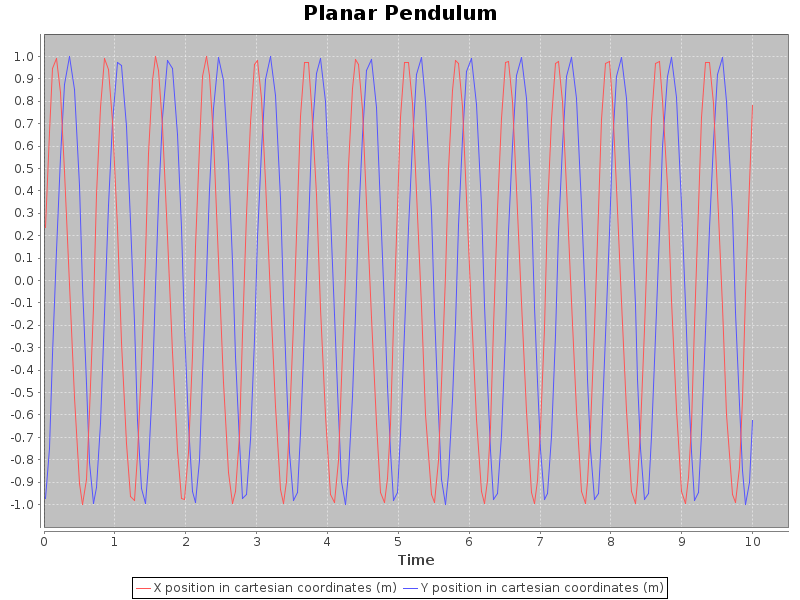Running Models
A simulation is run in one of two ways. For both ways, a Java Runtime Environment is required as is the Scala Build Tool. sbt is used to run the simulation.
Pre-packaged models
If the model is in some sense “finished” and has been published to one of the standard binary class repositores such as Maven Central, no extra software is necessary to run it, only the .properties file that instructs sbt where to get it is needed. An example .properties file looks like this. It can then be downloaded and run like so:
% sbt @mois-examples.properties
Getting uk.ac.ed.inf mois-examples_2.11 1.99.3-SNAPSHOT ...
downloading ...
...
Error: Must specify a command
mois 1.99.3-SNAPSHOT
Usage: mois [info|list|model] <args>...
Command: info <model>
Get information on a model
<model>
Model name
Command: list
List models
Command: model [options] <model>
Run a model
-d <value> | --duration <value>
Simulation duration (mandatory)
-b <value> | --begin <value>
Simulation start time (default: 0.0)
-i <value> | --initial <value>
Initial conditions filename (JSON)
-s <value> | --state <value>
Dump state at end of simulation
-o <value> | --output <value>
Output specification
<model>
Model name
Allowed output specifications:
gui[:vars...] Simple plot to a graphical window.
netcdf:<file> NetCDF output to the given file
png:<file>[:vars...] Simple plot to a PNG file
tsv Tab-separated values to standard output
tsv:<file> Tab-separated values to the given file
The helpful message displayed says that you must tell the program what to do! At the time of writing, three commands are supported.
listprints a list of available modelsinfotakes a model as argument and prints out detailed information about itmodelruns the model and requires at least a--duration
Let’s go ahead and try these.
% sbt @mois-examples.properties list
Known models:
uk.ac.ed.inf.mois.examples.BollenbachModel
uk.ac.ed.inf.mois.examples.HénonModel
uk.ac.ed.inf.mois.examples.PendulumModel
uk.ac.ed.inf.mois.examples.PySpiralModel
uk.ac.ed.inf.mois.examples.RoesslerModel
uk.ac.ed.inf.mois.examples.SampleODEModel
Suppose we would like more information about the Pendulum model. It isn’t necessary to type out the whole long name, just enough to make it unambiguous (“Pe” would be minimally sufficient in this case, but “P” would not because it would also match the python spiral model”:
% sbt @mois-examples.properties info Pendulum
model parameters:
Double(p0) := -10.0
Int(n) := 41
Double(θ0) := 0.0
Double(p_delta) := 0.5
Double(m) := 1.0
Double(l) := 1.0
process tree:
mass: 1.0
type: Hamiltonian
length: 1.0
name: Pendulum
mois-examples: 1.99.3-SNAPSHOT
title: Planar Pendulum
class: uk.ac.ed.inf.mois.examples.Pendulum
mois: 1.99.3-SNAPSHOT
variables:
Double(y) := -1.0
units: m
long_name: Y position in cartesian coordinates
Double(E) := 0.0
units: J
long_name: Total energy
Double(θ) := 0.0
units: rad
long_name: Angle anti-clockwise from vertically downwards
Double(x) := 0.0
units: m
long_name: X position in cartesian coordinates
Double(p) := 0.0
units: J.s
long_name: Angular momentum
To actually run a model, and show a graph of the last few datapoints for the x and y variables during execution, or alternatively write a plot out as an image, one could then do
% sbt @mois-examples.properties model --duration 10 -o gui:x,y Pendulum
% sbt @mois-examples.properties model --duration 10 \
-o png:pendulum-xy.png Pendulum
Which produces this image:

Developing and Modifying Models
The other way is to obtain a copy of the source code for the examples, and run sbt on its own. From the interactive shell it is possible to simply use the run command, with arguments as above:
% git clone https://github.com/edinburgh-rbm/mois-examples.git
% cd mois-examples
% sbt
> run model --duration 1 --output gui Pendulum
[info] Updating {file:.../mois-examples/}mois-examples...
[info] Resolving jline#jline;2.11 ...
[info] Done updating.
[info] Compiling 4 Scala sources to .../mois-examples/target/scala-2.11/classes...
[info] Running uk.ac.ed.inf.mois.MoisMain model --duration 10 --output gui Pendulum
[success] Total time: 5 s, completed Jul 8, 2014 10:53:57 PM
>
This way of running the simulation is useful while the model is being developed because it will automatically recompile any source code files that have been changed before actually running.